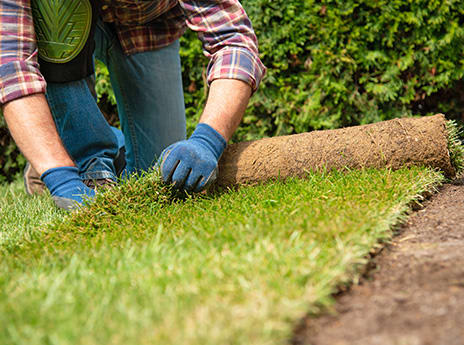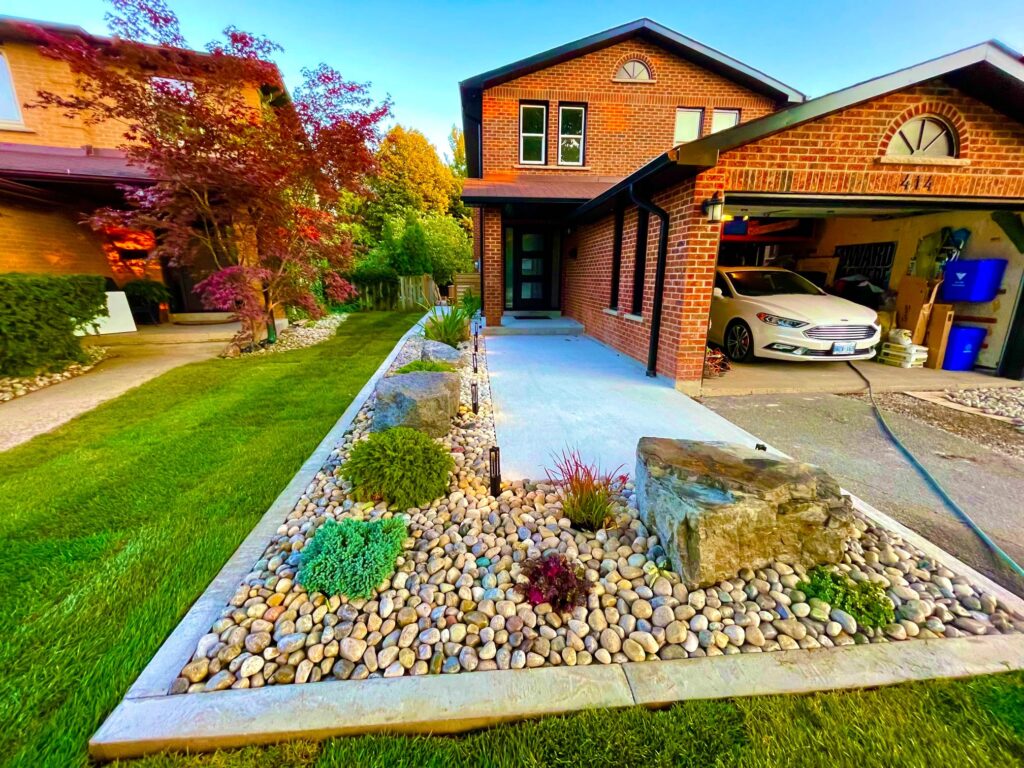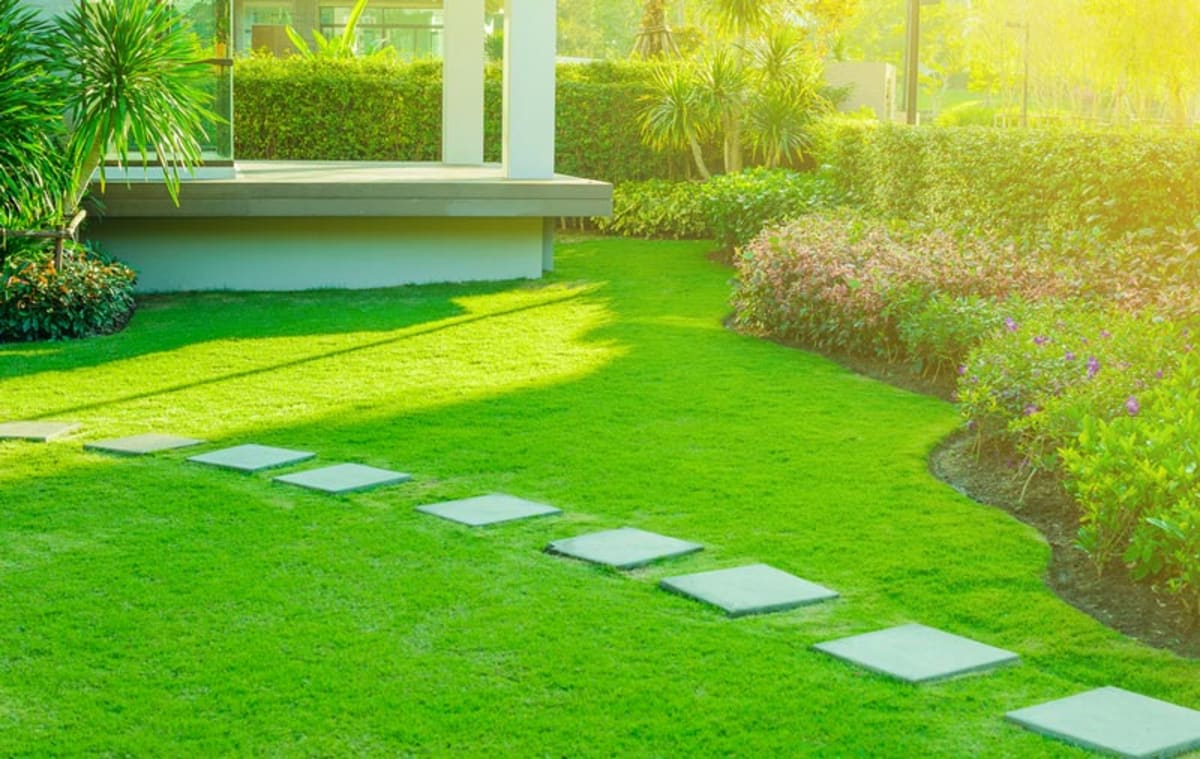Landscaping services that keep your garden thriving all year round
Comprehending the Comprehensive Scope of Works in Expert Landscaping Services
The considerable scope of specialist landscaping services includes a variety of fundamental elements - landscaping. It includes landscape layout concepts, plant selection, and hardscaping features. Additionally, it addresses watering systems and maintenance methods. Each aspect plays an important duty in developing practical and cosmetically pleasing outside spaces. Comprehending just how these elements collaborate can expose much about the art and science of landscaping. The trip right into this complex area is simply starting.
Landscape Design Concepts
Efficient landscape layout concepts are essential for developing unified outdoor spaces that enhance both aesthetic appeal and capability (Learn More). These principles guide the setup of components within the landscape, making sure a natural aesthetic experience. Trick components include equilibrium, which distributes visual weight equally; proportion, which associates the size of numerous elements per other and the room; and unity, which produces a sense of integrity with constant themes and products

Plant Selection and Installation
In the domain name of professional landscaping, plant option and installation play a critical duty in accomplishing a flourishing garden. Emphasizing native plant benefits, seasonal considerations, and the certain dirt and sunlight requirements of each species assures a lasting and aesthetically pleasing landscape. Cautious preparation in these locations not just improves biodiversity yet additionally advertises lasting eco-friendly health.
Indigenous Plant Benefits
Why should home owners take into consideration native plants for their landscaping tasks? Indigenous plants offer many advantages that enhance both visual appeals and ecological sustainability. They are well-adapted to regional climates, needing less water and maintenance contrasted to non-native species. This strength minimizes the need for chemical fertilizers and pesticides, advertising a much healthier ecosystem. Furthermore, indigenous plants supply habitat and food for regional wildlife, including pollinators, which can raise biodiversity in household areas. Their familiarity with regional dirt and weather conditions likewise brings about far better development rates and durability. By selecting indigenous plants, homeowners not only produce aesthetically attractive landscapes however additionally add to environmental conservation, making a positive influence on their regional atmosphere. As a result, indigenous plants represent a wise option for landscaping projects.
Seasonal Plant Considerations
House owners who have actually accepted native plants in their landscape design can additionally improve their outdoor areas by taking into consideration seasonal plant options. By integrating plants that flourish in certain seasons, they can produce visually attractive and vibrant landscapes throughout the year. Springtime might introduce lively flowers like daffodils and tulips, while summer season can display lavish foliage and vibrant perennials. Fall presents a combination of cozy tones with asters and goldenrods, while winter months can be highlighted with evergreens and decorative yards for structure. Expert landscapers typically recommend selecting plants that not only enhance existing native species yet also supply year-round rate of interest and assistance local wild animals. This thoughtful technique to seasonal plant option ensures a consistently evolving and sustainable garden environment.
Soil and Sunlight Demands
Successful landscape design rests on understanding the specific dirt and sunlight demands of plants. Various species flourish under differing problems, calling for a careful assessment of both factors throughout the selection procedure. Soil types, such as sandy, clay, or fertile, influence drainage, nutrient schedule, and origin advancement. Furthermore, pH levels can impact plant wellness, requiring soil testing to identify viability. Sunlight requirements vary substantially; some plants flourish in complete sun, while others favor full or partial color. A professional landscaping company takes into consideration these elements to assure peak development and visual allure. By lining up plant options with the setting's particular features, landscapes can achieve sustainability, resilience, and visual harmony, ultimately leading to successful plant establishment and long-lasting maintenance.
Hardscaping Functions and Construction

While landscape design commonly evokes photos of lush greenery and vivid blossoms, hardscaping attributes play a crucial function in defining outside areas. These elements, which include outdoor patios, pathways, retaining wall surfaces, and ornamental stonework, provide framework and functionality to lawns and gardens. Hardscaping uses materials such as concrete, rock, wood, and block, enabling diverse layouts that match the all-natural landscape.
The building and construction of hardscaping features requires careful planning and execution to assure durability and aesthetic appeal. Specialists assess site problems, drain, and spatial connections to produce natural outdoor environments. Appropriate installment techniques are critical, as they prevent concerns like erosion and moving over time.
Integrating hardscaping not only improves the visual passion of a residential property yet also assists in exterior tasks, making it a basic aspect of extensive landscaping services. Inevitably, thoughtful hardscaping adds to both the performance and beauty of exterior spaces.
Watering Solutions and Water Administration
Effective watering systems and water monitoring are vital components of professional landscaping, as they assure that plants obtain the necessary hydration for ideal growth. These systems can differ from straightforward drip watering arrangements to sophisticated computerized automatic sprinkler, made to satisfy the specific needs of varied landscapes. Correct water monitoring not just maximizes water usage, decreasing waste, but likewise improves plant wellness and lessens condition dangers.
Landscaping specialists evaluate numerous variables, including soil kind, plant species, and neighborhood climate, to develop customized watering options. Additionally, incorporating rainwater harvesting techniques can additionally enhance sustainability and performance. Normal maintenance of watering systems is necessary to preserve capability and prevent leakages, which can result in water loss and boosted costs (Learn More). Inevitably, a properly designed irrigation system plays a crucial role in preserving the visual appeal of outside rooms while promoting ecological stewardship within specialist landscape design methods
Lawn Care and Maintenance Strategies
Grass treatment and maintenance strategies are essential for achieving a lush, healthy and balanced backyard that enhances the overall landscape. These methods incorporate various practices aimed at advertising optimal growth and aesthetic charm. Regular mowing is important, as it urges thick, even development while preventing weeds from developing. Furthermore, correct fertilization supplies needed nutrients, with applications customized to the specific yard kind and soil conditions.
Watering techniques ought to concentrate on deep, infrequent irrigation to motivate origin advancement, while aeration improves dirt framework and promotes nutrition absorption. Insect and disease administration is additionally essential; identifying problems early permits reliable therapies that decrease damages.
Overseeding can invigorate broken or thin grass, boosting thickness and shade (landscaping). By applying these targeted grass care approaches, landscape design experts can assure that backyards continue to be healthy and vibrant throughout the seasons, greatly adding to the total beauty of the residential property
Seasonal Landscape Care and Maintenance
As the seasons adjustment, correct landscape treatment becomes essential for keeping the wellness and elegance of exterior rooms. Each season provides distinct difficulties and requirements. In spring, landscape specialists concentrate on trimming, growing, and feeding to urge development. Summer demands routine watering, weed control, and insect monitoring to shield newly established plants.

Throughout the year, seasonal landscape maintenance assurances that outdoor areas continue to be healthy and balanced and aesthetically enticing. Professional services can supply tailored maintenance plans that adapt to the certain requirements of each period, allowing homeowner to delight in vivid landscapes year-round. Generally, seasonal treatment is an important facet of specialist landscape design that promotes longevity and visual value.

Lasting Landscape Design Practices
An expanding number of residential or commercial property owners are welcoming sustainable landscaping techniques to create eco-friendly outside areas. These techniques concentrate on conserving sources, enhancing biodiversity, and lessening environmental impact. Native plants are usually chosen for their reduced water requirements and compatibility with neighborhood communities, minimizing the need for chemical fertilizers and pesticides. Rain gardens and absorptive paving are used to manage stormwater runoff, promoting groundwater recharge and minimizing disintegration.
Lasting landscape design includes natural horticulture methods that prioritize dirt health and advertise natural parasite control. Effective irrigation systems, such as drip watering and rain harvesting, help maximize water usage. Additionally, landscape designers significantly advocate for using recycled materials, such as redeemed timber and stones, to minimize waste. By embracing these sustainable practices, homeowner not only contribute to eco-friendly preservation but also produce cosmetically pleasing settings that can love very little upkeep.
Often Asked Questions
The length of time Does a Landscaping Job Generally Take to Complete?
Normally, a landscaping job can take anywhere from a couple of days to several weeks to finish, depending on the project's size, complexity, and style demands. Variables such as weather and resource availability also influence timelines.
What Aspects Influence the Cost of Landscaping Services?
Different variables affect landscaping service prices, including job size, style complexity, material quality, labor costs, geographic place, and seasonal demand. Each element adds distinctively to the overall financial needs of a landscape design task.
Are Landscape Design Solutions Available Year-Round?
Landscape design services are normally offered year-round, although accessibility may differ based on area, seasonal climate condition, and details service offerings. Some services could be restricted throughout severe weather condition or off-peak periods.
Do Landscaping Business Deal Warranties on Their Job?
Several landscaping companies do use service warranties on their work, which can differ in size and insurance coverage. Clients are motivated to ask concerning certain terms, guaranteeing they understand what is assured and any kind of conditions that apply.
Can I Design My Landscape Without Expert Help?
Yes, individuals can develop their landscapes without professional help. However, they may do not have know-how in plant selection, format, and environmental factors to consider, possibly leading to you can find out more less efficient designs that could require expensive modifications later.
In the domain name of professional landscaping, plant option and setup play a crucial role in achieving a prospering yard. Home owners who have actually welcomed native plants in their landscape design can further improve their exterior spaces by taking into consideration seasonal plant selections. Successful landscape design hinges on comprehending the specific soil and sunshine demands of plants. Reliable watering systems and water administration are crucial elements of expert landscape design, as they ensure that plants get the essential hydration for ideal growth. Landscape design professionals evaluate various aspects, including soil type, plant types, and local climate, to create tailored irrigation remedies.